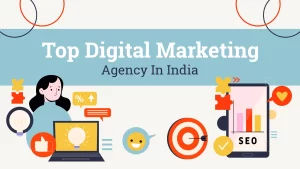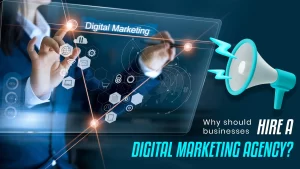A push marketing strategy, also known as a push promotional approach, is one in which a company strives to take its products to customers – to “push” them onto them. The purpose of a push marketing strategy is to employ numerous active marketing strategies to get their items in front of consumers, often immediately at the point of purchase. One of the primary goals of push marketing is to minimize the amount of time that elapses between a customer viewing a product and making a buying decision to buy the thing.
Push marketing tactics are frequently utilized to obtain and improve product awareness. Push marketing is mostly based on traditional forms of advertising/marketing, such as a series of television commercials or a series of direct mail mailings. Again, the primary objective is to make as many people aware of the product and its benefits as possible. “Push” refers to the fact that the company selling the product is constantly pushing it into the purview, or field of vision, of the potential customer.
Although almost every company strives to cultivate and maintain connections with its consumers or clients, push marketing is more concerned with making a quick sale than with cultivating relationships that generate brand loyalty. Creating a brand identity and a devoted consumer base falls more under the category of “pull marketing.” As a result, it is fairly typical to see a firm combining both push marketing and pull marketing to build a more comprehensive, overall marketing plan with maximum efficacy in terms of boosting revenue and profitability and extending the company’s market share.


Why Is The Marketing Strategy Important?
The primary goal of push marketing tactics is to acquire product exposure, which applies to both new and old items. This is especially important for newly introduced products when visibility is a high priority. In many cases, customers are either uninformed about the product or actively seeking it. With an appropriate and consistent ‘PUSH,’ product awareness and knowledge will become more established, which eventually helps to develop demand for the stated items. In other words, this marketing technique seeks to shorten the time between a buyer finding a product and purchasing it. Companies utilize aggressive and wide-reaching advertisements to make the greatest and most immediate influence on customers.
Examples of Using a Push Marketing Strategy
The company uses a push marketing method to bring the goods to customers. Consumers are introduced to or reminded of the product through any of the following push marketing methods:
- Direct selling to customers – e.g., a car salesman who meets customers in the company’s auto showrooms.
- Point of Sale displays (POS).
- Trade show promotion.
- Packaging designs to encourage a purchase.
Practical Example of a Push Marketing Strategy
Colin has recently introduced a new device, the Fanner 3000. Colin produced a novel fan product that generates no sound, is reasonably priced, is energy efficient, and can cool the space to the required temperature after spending months in the hot heat of Hong Kong.
Colin is preparing to showcase and sell his goods at an upcoming trade show in order to advertise it. To increase awareness, Colin intends to persuade large stores to place the Fanner 3000 near check-out counters. Furthermore, he guarantees that his product will be well-stocked and plentiful as client demand increases.
Advantages of Push Marketing Strategy
- Push marketing is beneficial for manufacturers that are attempting to develop a sales channel and are looking for distributors to assist with product promotion.
- It generates product exposure, product demand, and customer awareness.
- Demand can be more forecastable and predictable since the producer can manufacture and provide as much or as little product to customers as needed.
- If the product can be manufactured at scale due to significant demand, economies of scale can be generated.
Disadvantages of Push Marketing Strategy
- It needs an active sales force that can collaborate and network with retailers and distributors.
- Poor bargaining power with retailers and distributors; manufacturers urge retailers to offer their items, but the product may be new and hence not yet established as a profitable item for retailers to stock.
- Because the product is new, it may be difficult to anticipate demand properly.
- Initial marketing efforts are likely to be costly, and the benefits may be short-lived since they are more focused on gaining a one-time purchase than on establishing client connections and loyalty.
Wrap Up!
Reach far greater heights to make your products and services visible to prospective clients with push marketing tactics.
Reach out to Target 8 Sales for a comprehensive digital marketing solution.










